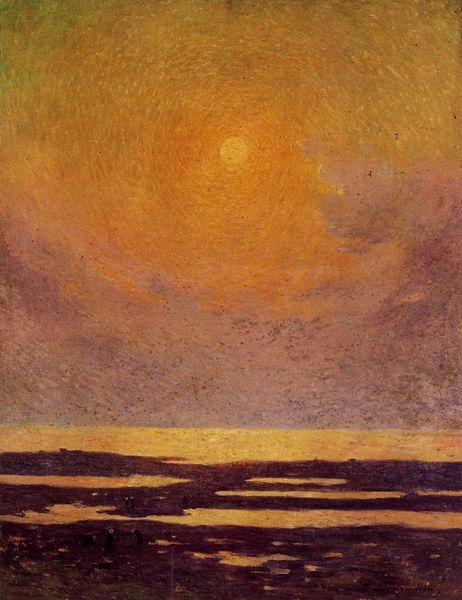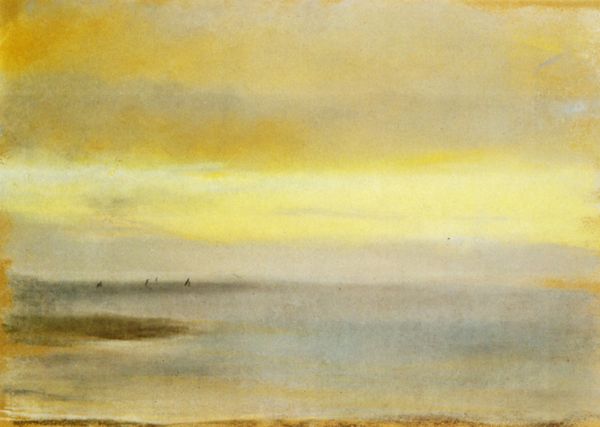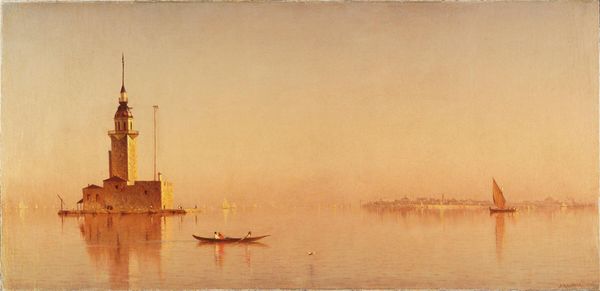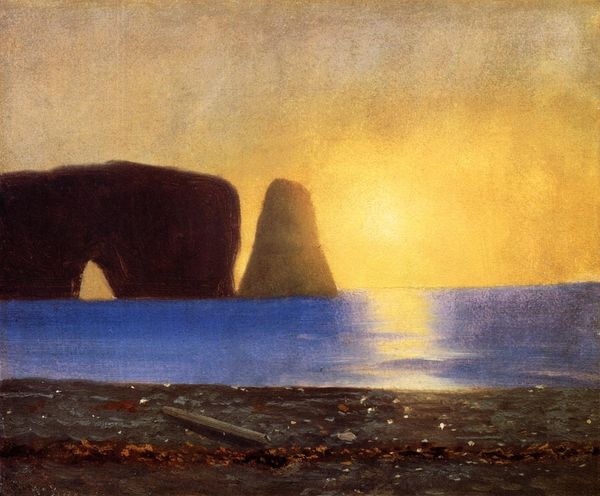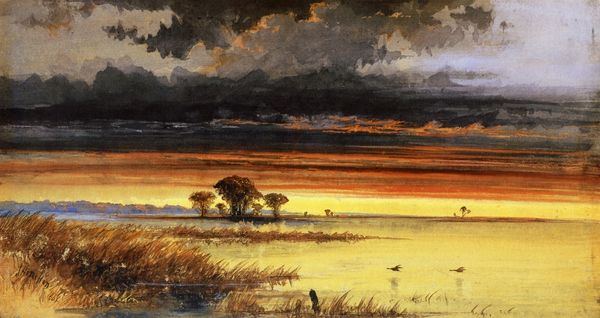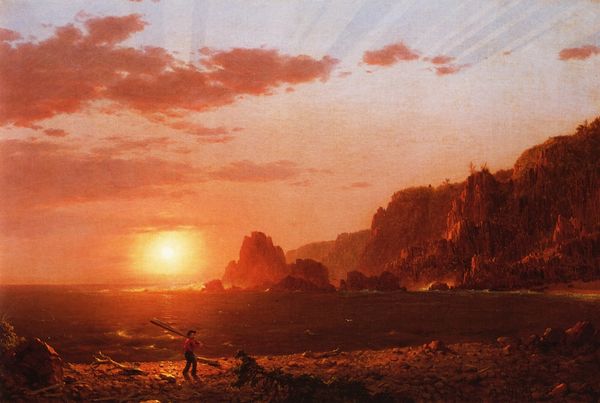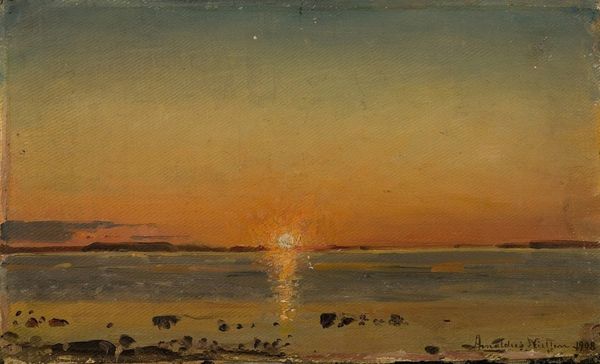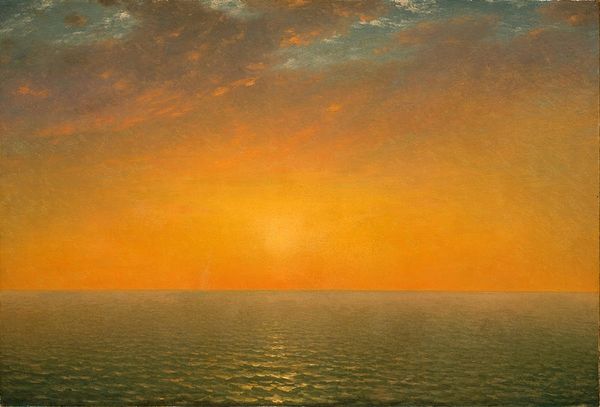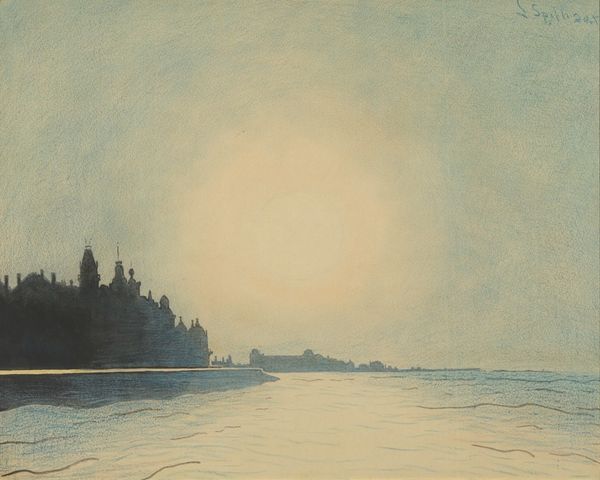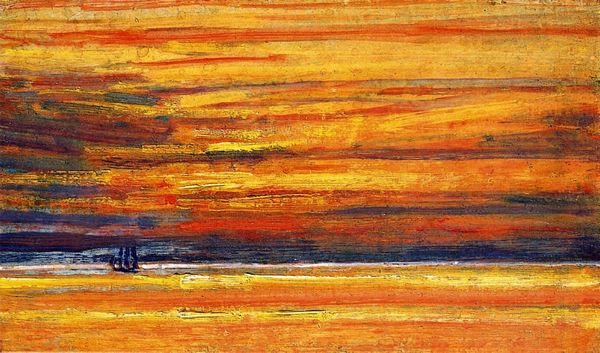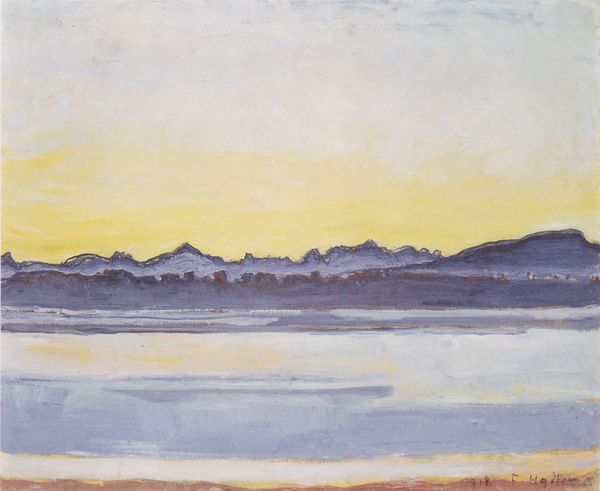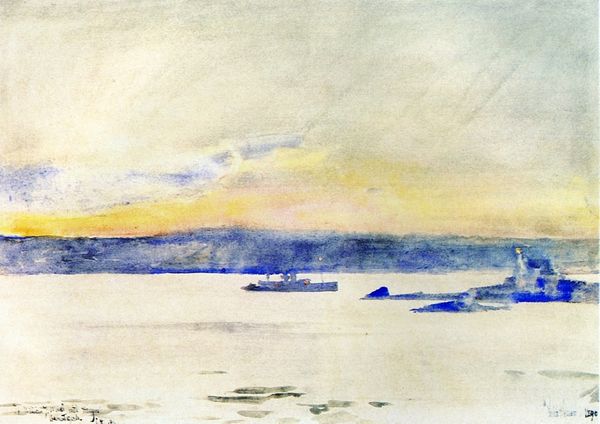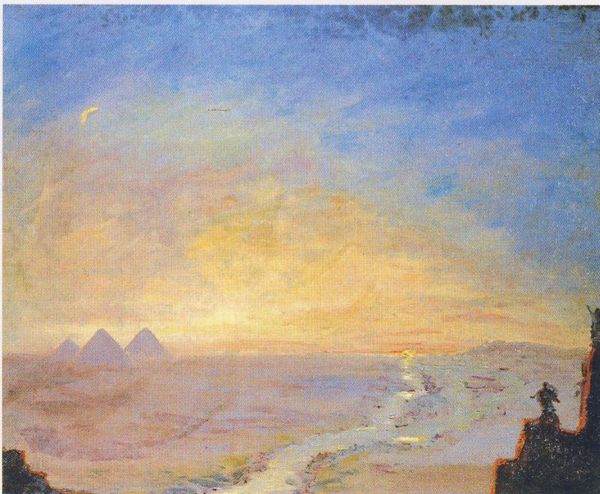
Copyright: Public domain
Curator: William Bradford's 1869 oil painting, "Ice Floes under the Midnight Sun," strikes me as intensely atmospheric. There's a palpable sense of solitude. Editor: Absolutely. The sheer luminosity is breathtaking. That golden light blanketing the entire canvas, reflecting off the water, really does evoke the feeling of the arctic midnight sun. It’s otherworldly. Curator: Bradford's work has a complicated relationship to the public's perception of exploration in the 19th century. On one hand it romanticizes it; and on the other hand it also hints at its perils. It prompts considerations around exploration, its ethics, and who benefits from the narrative of progress. Editor: Yes, this focus on light and shadow gives it a decidedly Romantic sensibility, imbuing the scene with a spiritual, almost sublime quality. The use of color here is so fascinating – that heavy wash of orange feels loaded. There’s something inherently colonial in its aesthetic. It's not just pretty; it signifies something about that period. Curator: It’s interesting that you bring that up, since we should note that the style borrows significantly from plein-air painting techniques. It emphasizes the artist’s direct experience of the landscape, reflecting a larger trend where the individual’s subjective encounter with nature was deemed highly valuable. Editor: It speaks to a power dynamic. These depictions were very important for shaping perceptions back home about the arctic, influencing both scientific and political agendas tied to these areas. Bradford was presenting a constructed image. Curator: Precisely. Understanding how these romanticized visions participated in the colonial project encourages a necessary form of contemporary critical engagement. It prevents passive consumption of beautiful landscapes and seeks interrogation of deeper power structures. Editor: The starkness really sticks with you. It pushes one to think more critically about who gets to see themselves reflected in art history. Curator: Right. What stories get told and by whom? The piece demands that we ask these kinds of crucial questions about art's societal role.
Comments
No comments
Be the first to comment and join the conversation on the ultimate creative platform.
